I have some data, for the variable names are too long. When I don't have them in an angle, they overlap. When I have them in an angle they look like the example below.
What I would like to do is simply have the possibility to write the problematic variable as:
This is a very long
name specifically
for the example
But I cannot figure out how to do this in ggplot2.
library(ggplot2)
counts <- structure(list(ECOST = c("0.52", "0.52", "0.39", "0.39", "0.26",
"0.26", "0.13", "0.13", "0.00", "This is a very long name specifically for the example"), group = c("control",
"treatment", "control", "treatment", "control", "treatment",
"control", "treatment", "control", "treatment"), count = c(18,
31, 30, 35, 47, 46, 66, 68, 86, 86), percentage = c(16.3636363636364,
31.9587628865979, 27.2727272727273, 36.0824742268041, 42.7272727272727,
47.4226804123711, 60, 70.1030927835051, 78.1818181818182, 88.659793814433
), total = c(110, 97, 110, 97, 110, 97, 110, 97, 110, 97), negative_count = c(92,
66, 80, 62, 63, 51, 44, 29, 24, 11), p_value = c(0.00843644912924255,
0.00843644912924255, 0.172947686684261, 0.172947686684261, 0.497952719783453,
0.497952719783453, 0.128982570547408, 0.128982570547408, 0.0447500820026408,
0.0447500820026408)), row.names = c(NA, -10L), class = c("data.table",
"data.frame"))
ECOST group count percentage total negative_count p_value
1: 0.52 control 18 16 110 92 0.0084
2: 0.52 treatment 31 32 97 66 0.0084
3: 0.39 control 30 27 110 80 0.1729
4: 0.39 treatment 35 36 97 62 0.1729
5: 0.26 control 47 43 110 63 0.4980
6: 0.26 treatment 46 47 97 51 0.4980
7: 0.13 control 66 60 110 44 0.1290
8: 0.13 treatment 68 70 97 29 0.1290
9: 0.00 control 86 78 110 24 0.0448
10: This is a very long name specifically for the example treatment 86 89 97 11 0.0448
counts %>%
ggplot(aes(x = ECOST, y = percentage, fill = group, label=sprintf("%.02f %%", round(percentage, digits = 1)))) +
geom_col(position = 'dodge') +
geom_text(position = position_dodge(width = .9), # move to center of bars
vjust = -0.5, # nudge above top of bar
size = 4) +
scale_fill_grey(start = 0.8, end = 0.5) +
theme_bw(base_size = 15) +
theme(axis.text.x=element_text(angle=45,hjust=1))

